Hidamari ga Kikoeru (2024)

Final episode and final versions are now up! I added previews and edited a few lines. I hope you enjoy this project as much as I did.
A huge thank you goes out to everyone who supported me on this journey weekly!
Quick navigation
Feel free to support this drama on official streaming sites as well if you enjoy it.
I've been a fan of Nakazawa Motoki ever since I first saw him, so it was clear to me I'd end up subbing it. If you enjoy his acting in this drama, feel free to check out his fun ikedora here. You can also check out more of his stuff here.
This is a collab between oshiroen and me. If you enjoy these subs, please thank him as well for helping me with episodes 1-5 and support his projects.
Special thanks to scanlation team Hoshikuzuu Scans for some of the lines.
Also, this got an instant copyright strike on dailymotion, so I won't be uploading there. Use mega or gofile, you can stream on both of them.
Streaming
Episode 1
Episode 2
Episode 3
Episode 4
Episode 5
Episode 6
Episode 7
Episode 8
Episode 9
Episode 10
Episode 11
Episode 12
Hardsub (batch)
Raws + subs (batch)
Translation notes
You should read these after finishing the corresponding episode.
Episode 2:
Pure tone audiometry test is the standard for assessment of the degree of hearing loss.
Episode 5:
Also there was some confusion about the hearing aids. As you can see in episode 4, Kohei's hearing aids got damaged from the prolonged exposure to rain. They did not "break" as the streaming services would say. Hearing aids are usually not so fragile physically (as we saw when Kohei's hearing aid got knocked out his ear during the basketball scene) and have some degree of shock resistance, but they can be damaged with water since they are not fully water-resistant, which is what most likely happened. Also it's preferred to fix the current ones rather than replacing them with new ones which is what happened in the drama too. They needed to be recalibrated anyway as Kohei's hearing got worse.
Episode 6:
First off, let me talk about some note taking tips they talked about in the episode.
Underlining a phrase or a word is common in Japanese note taking and using a line with an arrow means the same thing repeats, so this can help save time, especially if it's harder to write.
You can see it clearly here:
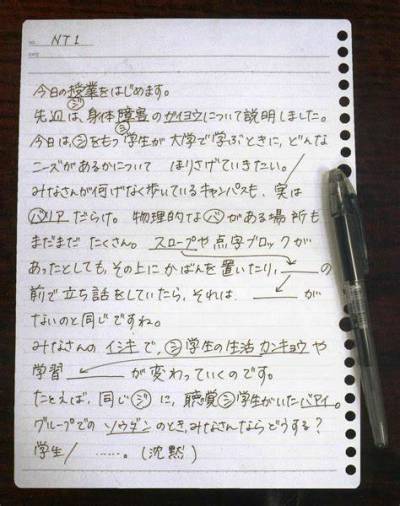
The line "Using oblique lines and careting is good practice." was actually difficult to translate well and I had to consult that with a Japanese person because the word the Japanese use (吹き出し) for this means "speech bubbles" like in the manga and I don't think it fits this context, so I went with carets as that was the closest translation I could think of. You can see it even in this episode. These speech bubbles are used to insert information you forgot to include. Some people prefer using straighter lines, while others do it like in the screenshot.
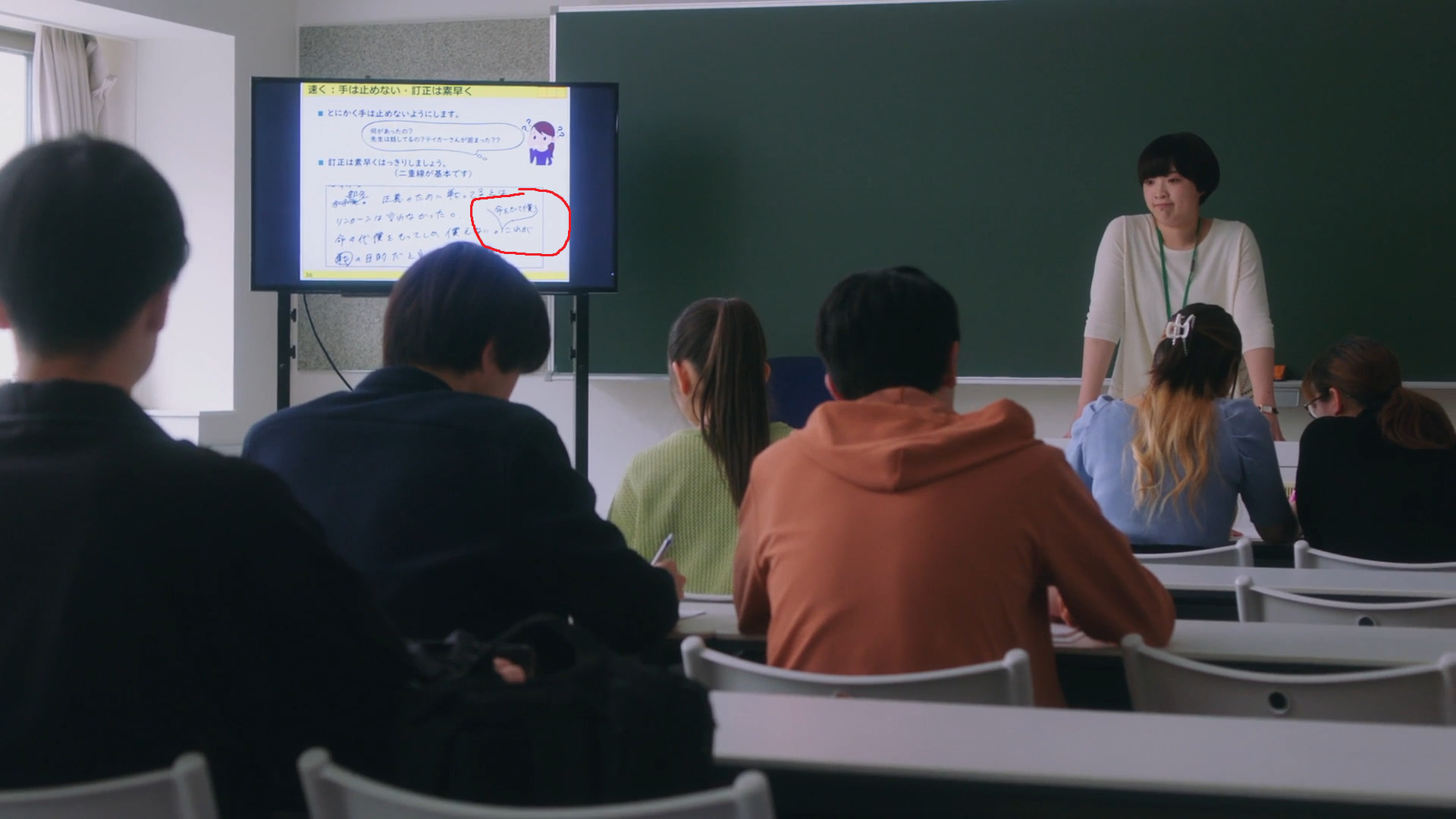
Physically disabled persons (in Japanese: 身体障害者 - shintaishougaisha, lit: physically disabled people) in Japan can (it's not mandatory) apply for a certificate of their disability, in this case it's the physical disability certificate (in Japanese: 身体障害者手帳 - shintaishougaishatechou, lit: certificate of a physically disabled person) that we see Taichi holding at the end of episode 6.
In Japan, physical disability is graded based on severity into several grades (1-7) and these grades (級) are separate for each body part or organ / body system afflicted. Note: Grade 7 is never used for a single disabled organ. This doesn't mean that every physical disability type has all these grades, but they always have some grade within 1-6. Each disability (or a sum of them) also falls under a type (種) based on the grade it is allocated, either Type 1 (第1種) or Type 2 (第2種). In the case of hearing impairments (聴覚障害 - choukakushougai), there are 4 grades. Grades 2 and 3 which fall under Type 1 (more severe disabilities / disabilities requiring more assistance) and Grades 4 and 6 which fall under Type 2 (less severe disabilities / disabilities requiring less assistance). For multiple physical disabilities, the rules are a bit different as the numbers of grades get added up and the resulting type is based on that number.
The description of the grades for hearing impairment is if as follows:
Grade 2 - Severe disability (basically deafness) in both ears, hearing threshold starts at 100 dB or more in both ears
Grade 3 - Hearing threshold in the interval of 90-99 dB in both ears (someone who cannot understand loud speech unless they're close to their ears)
Grade 4 - Both ears have a hearing threshold in the interval of 80-89 dB or clarity of normal speech understood is less than 50% for both ears (not sure how this one is measured)
(someone who cannot understand normal speech unless close to their ears)
Grade 6 - Both ears have a hearing threshold in the interval of 70-79 dB (cannot understand speech from distance of more than 40 cm) or one ear has a hearing threshold at 90+ dB and the other ear has a hearing threshold at 50 dB or higher (assymetrical hearing loss)
In Maya's case, you can see the screenshot below.
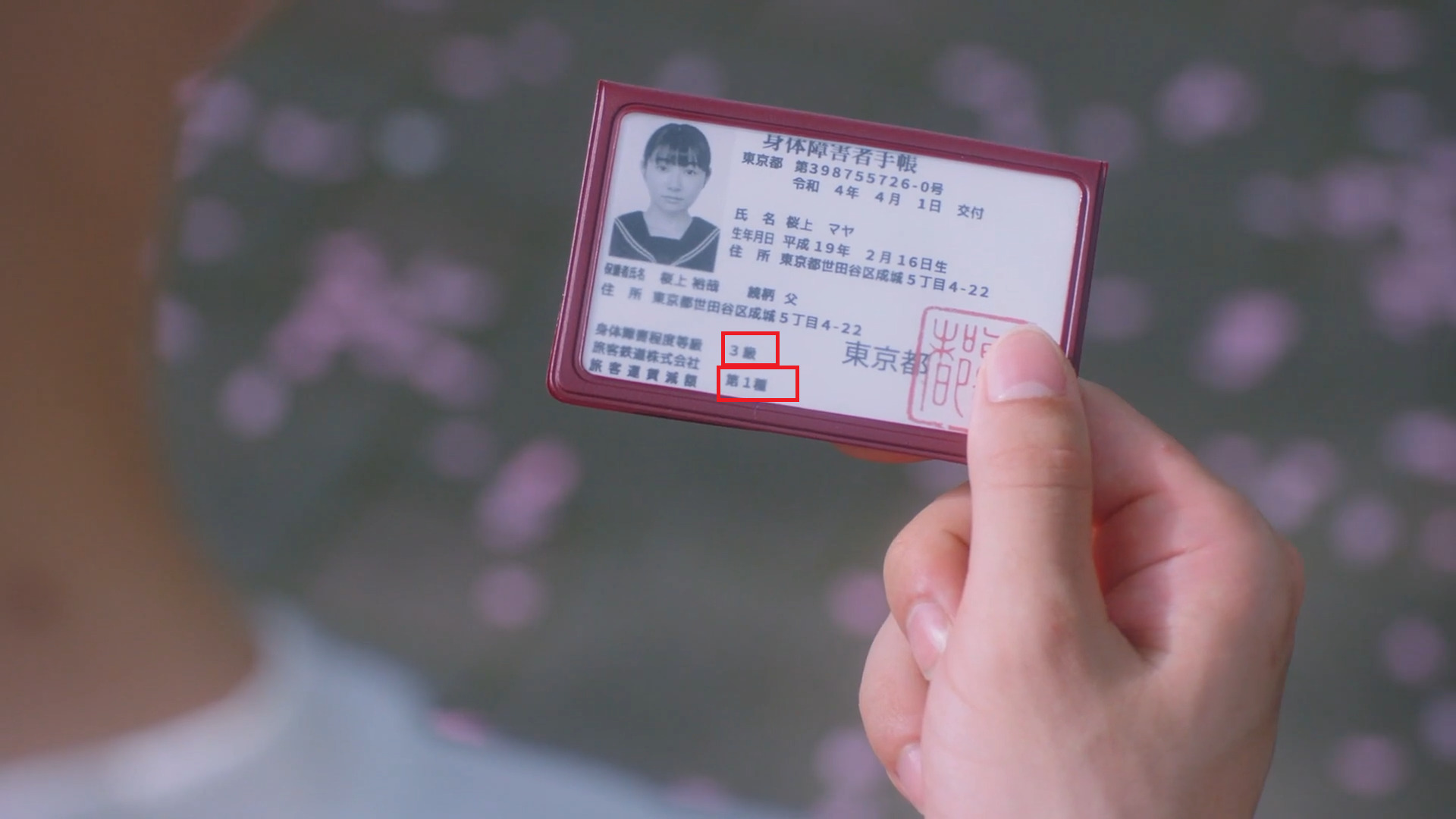
From her certificate, we can see she falls under Grade 3 and Type 1 which is the more severe type of disability. It also means she's not fully deaf yet, but has a very significant hearing loss in both ears.
To illustrate some decibel levels:
Whispering - 20 dB
Quiet conversation - 30 dB
Normal conversation - 50 - 70 dB
Loud conversation - 70 - 80 dB
Screams from 30 cm away - 90 dB
Screaming next to ears - 110 dB
Holders of physical disability certificates are elligible for several discounts, material and non-material benefits based on their Type (Type 1 or Type 2). Usually it's 50 % discount for public transportation, reduction of different taxes, medical subsidies, provision of medical equipment required for daily life, discounts / free entry to public facilities such as museums, zoos, acquariums, etc.
Naturally, there's also the associated stigma related to showing your certificate to get a discount (this is especially true for people with intellectual disabilities, but those have a slightly different certificate).
Episode 7:
I decided to stick with Kousen instead of Kosen since that's what's on the official materials created for the drama.
Episode 8:
In case you were wondering since the character of Mohitan (or Mohi-tan if you will) isn't shown for that long in the drama, here are some BTS pics of it! It's an original character created by the manga's author. It's quite cute!
Episode 9:
Kohei mentioned getting a qualification for sharoushi (In Japanese: 社労士, abbreviated from 社会保険労務士 - shakaihokenroumushi) - officially translated as labor and social security attorneys. Sharoushi are unique experts on social insurance and labor who mostly support smaller and medium-sized enterprises and serve many roles in Japanese society. The examination to become one is conducted by the government and it's one of the most difficult certification examinations in Japan, so Kohei's definitely aiming high with that one. If you want to learn more about them, feel free to visit the site of the official site of the association or this one.
Braille blocks (or tenji blocks, in Japanese: 点字ブロック) are mentioned in this episode for which Japan is famous for. They're usually yellow in color, so they really stand out. They were first developed in Japan in 1965 and then later implemented in 1967. These structures allow easier navigation for visually impaired as a form of tactile paving. There are two types - guidance blocks and warning blocks. Guidance are the blocks with 4 parallel lines that provide information about the direction you should be moving. The warning blocks are grids of dots and indicate certain danger.
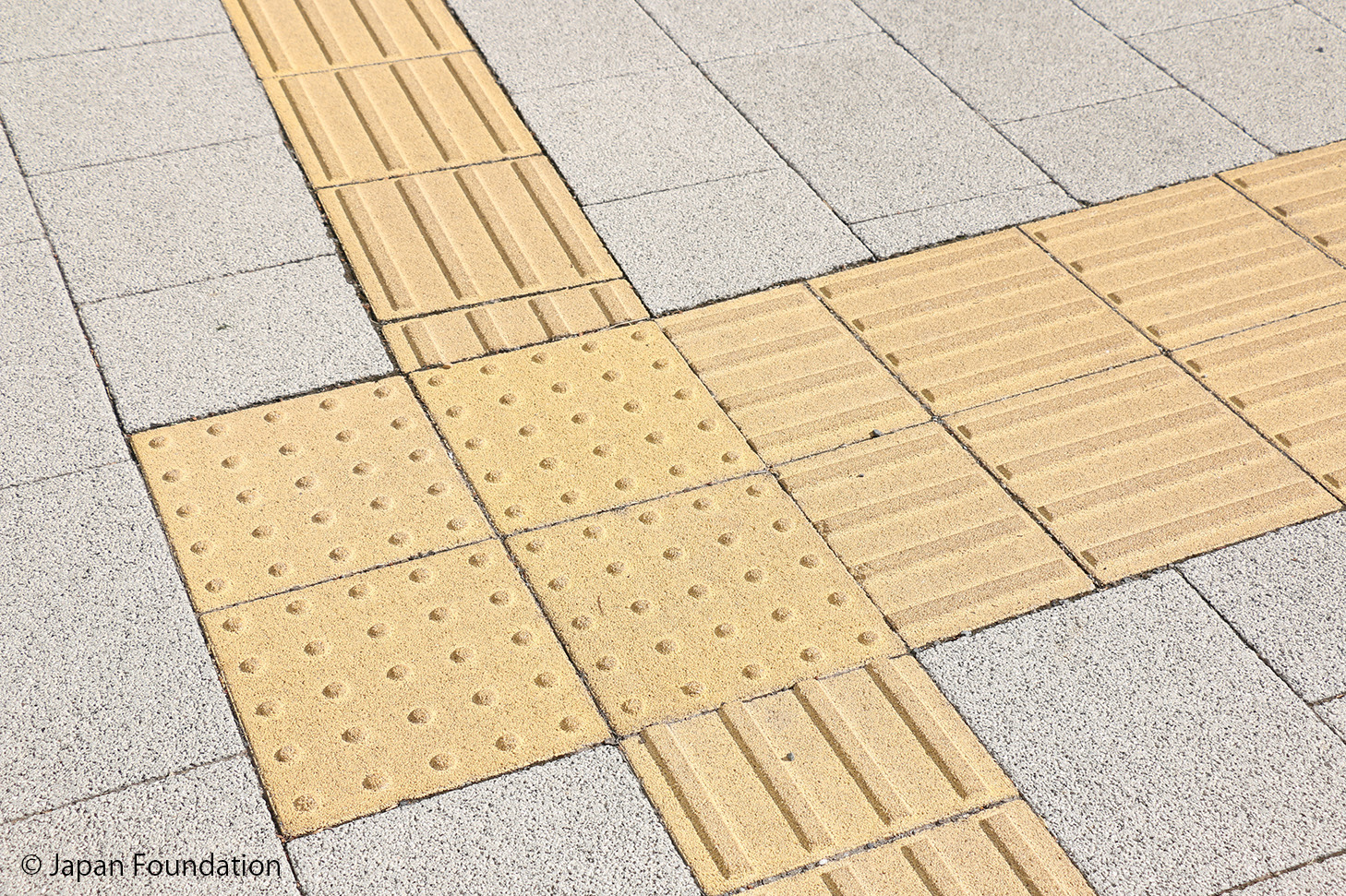
Throughout the episode you can see Taichi being confused by all those difficult words. I wasn't sure how to do sub some sections because of it since the translation isn't really particularly difficult, but the words can be unusual for Taichi.
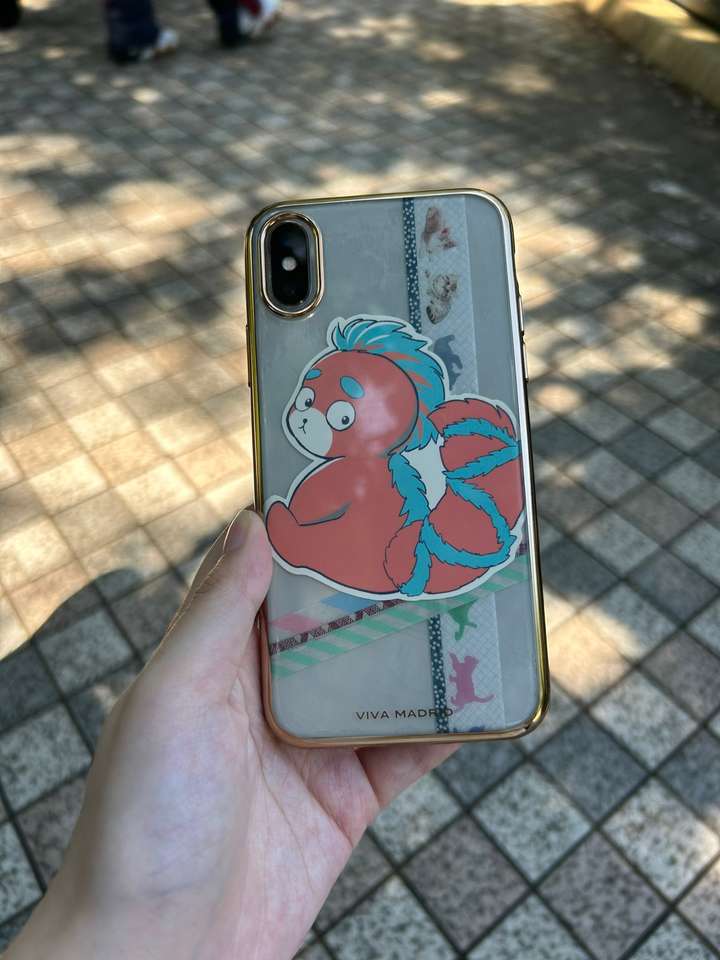
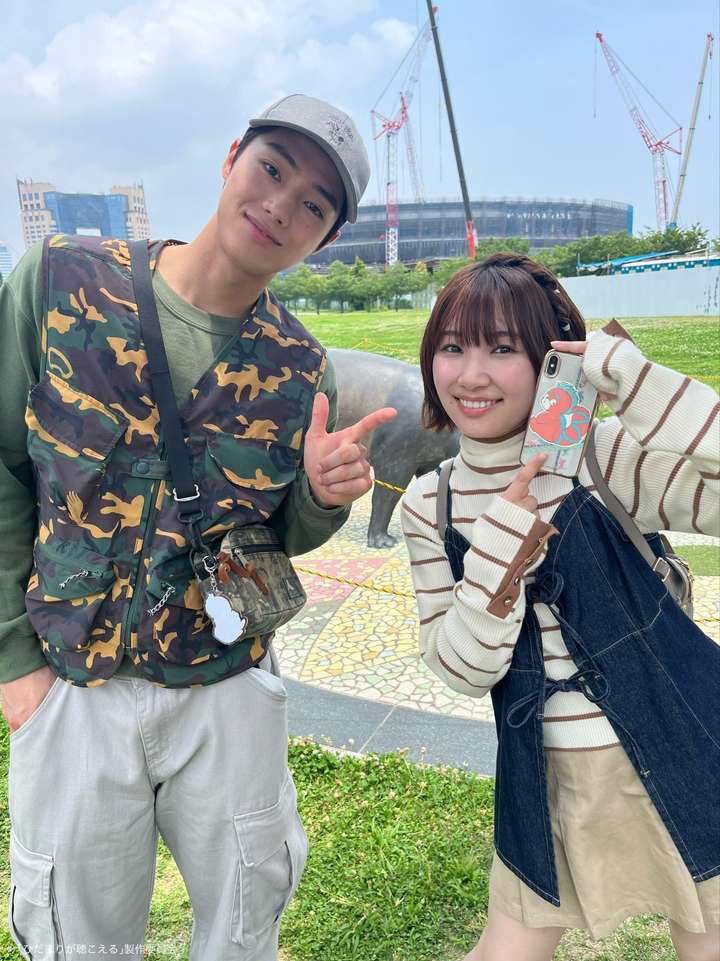
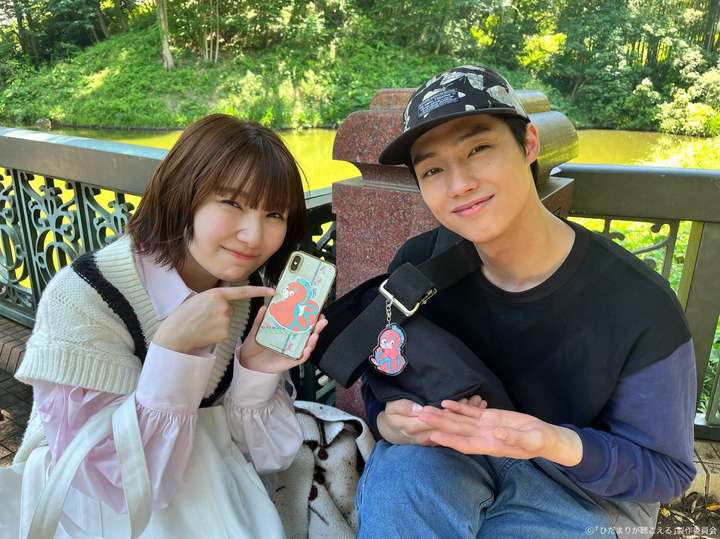
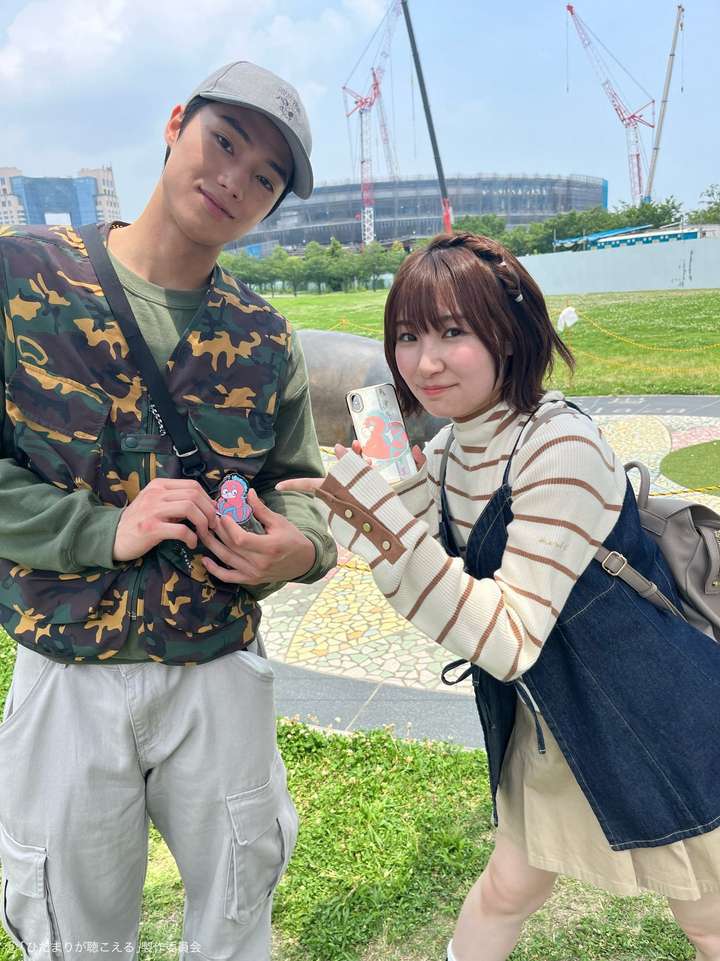
Comments